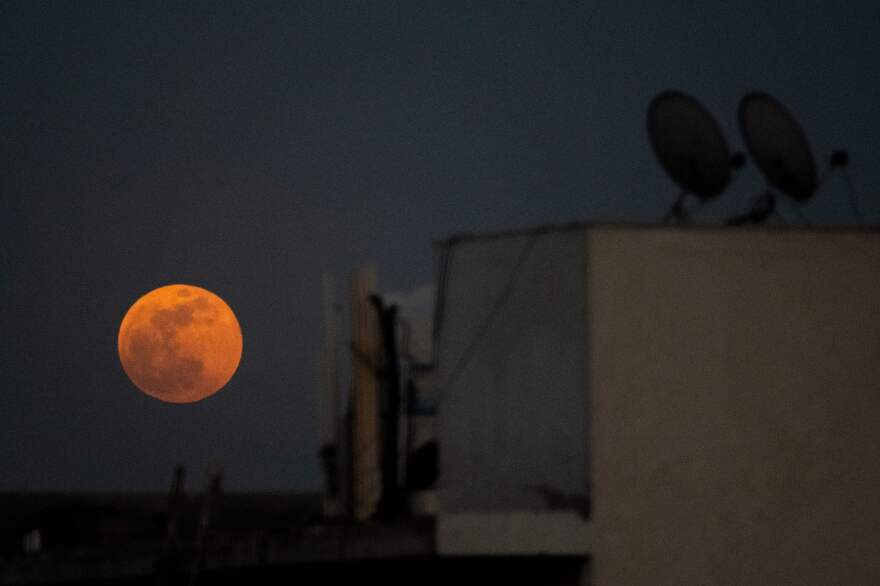West Coast night owls and East Coast early risers will have the best view of the upcoming lunar eclipse this Friday.
Overnight, the moon will pass into the shadow of Earth cast by the sun, illuminating the gray orb with a red hue. It will be the second and final eclipse of the year.
NASA predicts the eclipse will last over 3 hours and 28 minutes. That would make it the longest partial lunar eclipse in 580 years, according to the Holcomb Observatory at Butler University.
Here's how to see the eclipse and what you might glimpse:
How to see the eclipse
The lunar eclipse will be visible in North America, as well as parts of South America, Polynesia, eastern Australia and northeastern Asia, according to NASA.
For U.S. viewers the peak of the eclipse — when the moon is the most covered by Earth's shadow — will be at 4:03 a.m. ET.
But the moon will begin to pass into the Earth's shadow much earlier, around 1 a.m. ET. At 2:19 a.m. ET, the moon will move into the umbra, the inner part of Earth's shadow and begin to look like a chunk is missing from it. It will turn red around 3:45 a.m. ET.
To see the show, simply go outside and have a look. A pair of binoculars or a camera with a tripod might enhance your view.
Why this is an "almost total" lunar eclipse
It's true that this won't be a total lunar eclipse. NASA calls it an "almost total" eclipse.
That's because up to 99.1% of the moon will pass into Earth's umbra, but the whole thing won't.
"Partial lunar eclipses might not be quite as spectacular as total lunar eclipses," NASA acknowledged, "but they occur more frequently."
Copyright 2021 NPR. To see more, visit https://www.npr.org.





